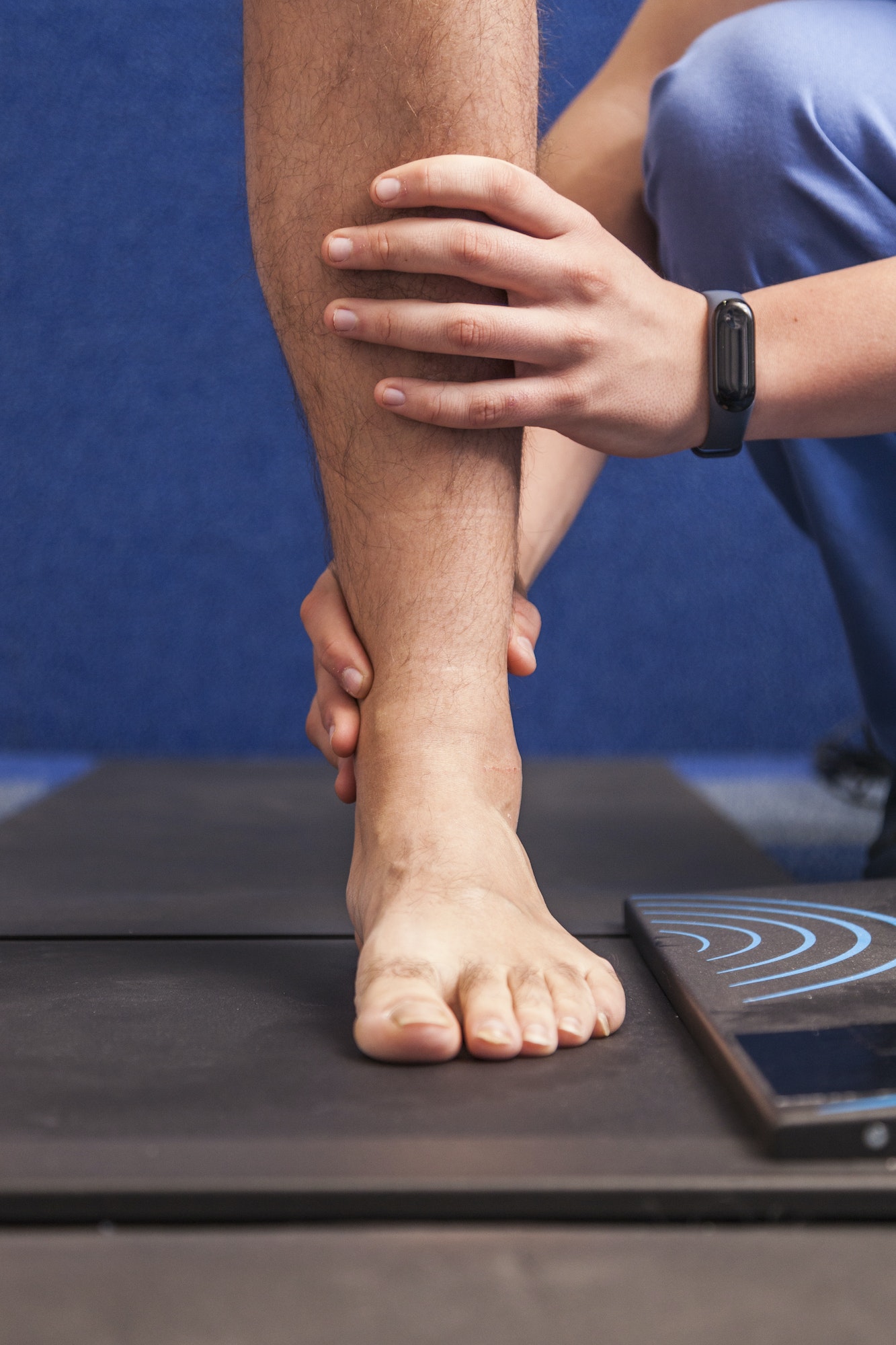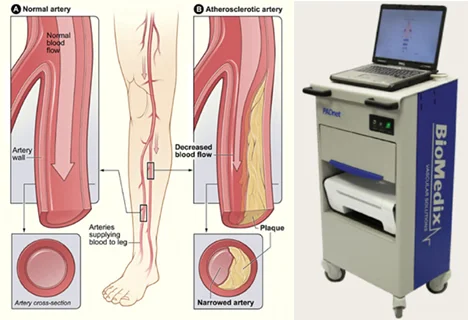Table of Contents
Screening for Peripheral Arterial Disease (PAD)
What Is Peripheral Arterial Disease (PAD)?
Peripheral Arterial Disease (PAD) is a serious circulatory problem in which the blood vessels that carry blood to your arms, legs, brain or kidneys become narrowed or clogged. This affects 8 million Americans, most over the age of 50. It may result in leg discomfort with walking, poor healing of leg sores/ulcers, difficult to control blood pressure or symptoms of stroke. People with P.A.D are at significantly increased risk for stroke and heart attack.
Risk Factors For P.A.D.
Because only half of those with P.A.D. experience symptoms, it is important that anyone with known risk factors be screened or tested for P.A.D.
The risk factors include:
- Being over age 50
- Smoking (currently or previously)
- Diabetes
- High blood pressure
- High cholesterol
- Personal or family history of P.A.D., heart disease, heart attack or stroke
- Sedentary lifestyle (infrequent or no exercise)
Signs and Symptoms
- Pain in the legs brought on by walking and relieved by rest.
- Pain in the legs at rest.
- Poorly healing wound on lower extremity.
- Injury to lower limb or foot involving blood vessels.
- Discoloration of toes and feet.
P.A.D. and Foot Problems
Proper circulation to the lower extremities (legs and feet) is absolutely necessary for walking and for a normal healing process of cuts, scrapes and blisters. Without blood flow (i.e. circulation is reduced and P.A.D is present), the smallest of cuts, scrapes and/or blisters can be much more serious. In some patients, this can lead to infections and hospitalizations.
Treatment of foot deformities (bunions, hammer toes and other bony prominences) and dermatologic conditions (athlete’s foot and toenail problems) can be complicated by the presence of PAD. The reduced circulation of P.A.D can create delayed and non healing of surgery to correct any of the above conditions.
Once detected, P.A.D. may be corrected or at least improved with proper treatment.
What is PADnet?
PADnet testing can provide early detection of P.A.D when treatment options are broadest (incorporating both lifestyle modification, and non-invasive and invasive therapeutic options). The PADnet detects blockages in arteries and the quality of blood flow using pulse-volume recordings and segmental blood pressure measurements.
Before Your Test
Getting ready for this test requires little effort. You will be asked to remove clothing that covers your arms and legs, keeping your underwear on. You may be asked to remove your shoes and socks as well. A gown may be provided, or you may bring shorts to wear. This test most often takes 15-20 minutes. Be sure to allow extra time to check-in.
- Do not smoke or use tobacco 30 minutes prior to your PADnet+ exam. Smoking constricts the peripheral arteries and can interfere with the results.
- If you think you cannot tolerate lying flat on the exam table for the test, please let us know when scheduling the test.
During Your Test
You will lie down on the exam table. Pressure cuffs will be wrapped snugly around your arms, above knees, calves, and ankles. The technician will inflate the cuffs, and the sensors in the machine will record the pulse waves that correspond to each beat of your heart.
Blood pressure will be recorded in your arms and in your legs. Arterial waveforms and corresponding pressure readings will be recorded at multiple points in your legs. A vascular physician will review each test and interpret the combination of the pressure and waveform readings.
If pressures and/or waveforms are abnormal, your doctor may recommend additional diagnostic testing.
After Your Test
You may return to your normal routine right after the test. Your doctor will let you know when the results are ready.
Avoiding P.A.D. Complications
Getting regular foot exams—as well as seeking immediate help when you notice changes in the feet—can keep small problems from worsening. P.A.D. requires ongoing attention.
To avoid complications, people with this disease should follow these precautions:
- Wash your feet daily. Use warm (not hot) water and a mild soap. Dry your feet—including between the toes—gently and well.
- Keep the skin soft. For dry skin, apply a thin coat of lotion that does not contain alcohol. Apply over the top and bottom of your feet, but not between the toes.
- Trim toenails straight across and file the edges.
Keep edges rounded to avoid ingrown toenails, which can cause infections. - Always wear shoes and socks. To avoid cuts and abrasions, never go barefoot—even indoors.
- Choose the right shoes and socks. When buying new shoes, have an expert make sure they fit well. At first, wear them just for a few hours daily to help prevent blisters and examine the feet afterward to check for areas of irritation. Wear seamless socks to avoid getting sores.
- Check your feet—every day. Check all over for sores, cuts, bruises, breaks in the skin, rashes, corns, calluses, blisters, red spots, swelling, ingrown toenails, toenail infections, or pain.
- Do not try to take care of cuts, sores, or infections yourself.
- Call your podiatrist if you develop any of the above problems or seek professional help immediately.
Contact Us Today!
Do you have any known risk factors and are ready to be screened or tested for P.A.D.? Our PADnet is the optimal choice for patients who want to be proactive when it comes to their foot health. Please contact us to schedule your initial consultation. You can reach out to us by calling us or simply fill out the form to schedule an appointment with our award winning podiatrists.




